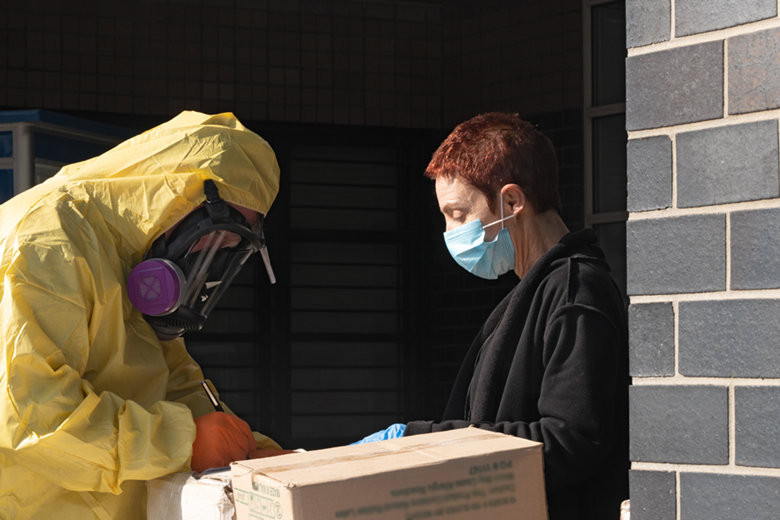Through the Healthcare Barricade

A senior analyst from APEC’s Policy Support Unit considers the crucial role of healthcare-related trade policies amid COVID-19
It’s about time we reflect on and re-examine global trade policies, even as the planet reels from the ongoing COVID-19 pandemic. Many of the world’s economies are vastly unprepared for a health crisis like what we are facing.
Principal to any adjustments of such trade policies across the APEC region is the consideration of trade policies related to health systems, particularly medical goods. APEC economies should use this time as an opportunity to initiate much needed changes, as global trade in medical goods has not been as critical and urgent as it is now even though it accounts for nearly USD 1 trillion in value.
In most APEC economies, there’s much room for improvement as far as addressing tariffs on medical goods. There’s an apparent imbalance here because while APEC member economies apply low most-favored nation (MFN) tariffs on medicine and medical equipment, they likewise impose higher tariff rates on medical supplies and personal protective equipment (PPEs). This is particularly harmful to people and patients because access to PPEs and medical supplies are of prime importance given the current challenges presented by wide-scale lockdowns and social distancing measures and the large inflow of patients requiring medical attention.
In fact, the top 10 products with the highest average for all tariff duties on medical goods are comprised of medical supplies and/or personal protective products. Ethyl alcohol used for producing hand sanitizer, for example, is highest on the APEC MFN tariff list at 76.6 percent. Other key medical supplies and protective products on the list are shielding goggles and visors, surgical gloves made of vulcanized rubber, hand soaps, plastic face masks, and other cleaning and sanitizing products.
From an economic perspective, over 90 percent of medical goods trade among APEC members center around 10 APEC economies.
It’s not enough that some governments throughout the world are implementing temporary waivers on import tariffs for a variety of medical goods. Most of these measures are transient and will last only for the duration of the pandemic. Instead, we have to take the long view and focus on the apparent and vast lack of clear healthcare-related trade policies. The same issues we are dealing with today are likely to appear anew should another public health crisis occur in the future if we do not address this now.
How does APEC go about this? Firstly, APEC economies need to establish systems that allow for more efficient and faster movement of medical goods internally and across borders. A good start is a collective initiative among members that seeks to reduce or outright eliminate tariffs on essential medical goods used to fight COVID-19 on a permanent basis. APEC finds itself in a great position to effect change, given its track record. Should this initiative push through, it would fit well within the purview of the Market Access Group or the Committee on Trade and Investment.
Aside from aiming to relax tariffs, APEC could also cease non-tariff measures that hamper the smooth regional flow of medical goods. APEC economies could complement the steps outlined earlier, targeted tariff changes with dialogues and initiatives to remove any trade-restrictive measures on medical goods, especially export restrictions and bans. While some governments have implemented protective measures that affect a wide range of medical goods, some decisions could, in effect, unnecessarily restrict access to these critical life-saving products and affect the production chain. Worse, such measures could unduly increase the price of medical goods.
Lastly, it is imperative that supply chains dedicated to the provision of medical and other essential goods are kept open during any public health crisis. The ongoing pandemic has severely affected internal and cross-border movements. While measures are necessary to limit people movements and promote social distancing, they have nonetheless affected some production lines and transport frequencies for all modes of cargo, which in turn results in increased freight costs.
APEC is in a prime position as a forum to strengthen both regional and multilateral efforts on the trade of medical goods and initiate lasting and sustainable change. We must envision trade policy as a key tool for assisting health care systems, especially those bearing the brunt or struggling to cope with the pandemic.
#
Kuriyama is a senior analyst in APEC’s Policy Support Unit (PSU). Download PSU’s policy brief, Promoting Trade in Medical Goods to Tackle COVID-19 Challenges.

